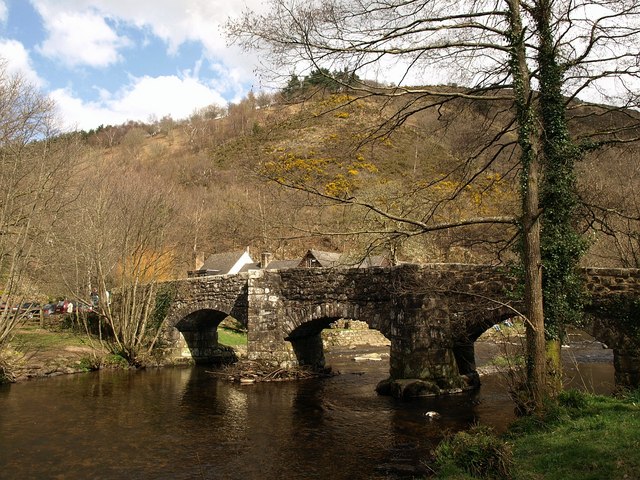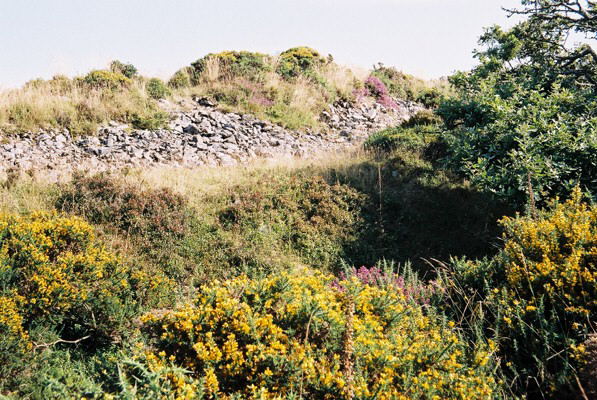|
Prestonbury Castle
Prestonbury Castle is an Iron Age Hill fort on the north east edge of Dartmoor in Devon, England. Situated on a massive hilltop some 240 metres above sea level overlooking the Teign Valley, it is located near two other hill forts (Cranbrook Castle and Wooston Castle Wooston Castle is an Iron Age Hill fort situated on the edge of a hill overlooking the Teign Valley in Devon some 200 metres above sea level, only 3 km south and east of Prestonbury Castle and 5 km east of Cranbrook Castle Cranbrook ...) both of which lie about away.Sellman, R. R. (1985) ''Aspects of Devon History'', Devon Books ; Chapter 2; The Iron Age in Devon (Map Page 11 of Iron Age hill forts in Devon includes Prestonbury) References External linksRoman Britain [...More Info...] [...Related Items...] OR: [Wikipedia] [Google] [Baidu] |
Iron Age
The Iron Age is the final epoch of the three-age division of the prehistory and protohistory of humanity. It was preceded by the Stone Age (Paleolithic, Mesolithic, Neolithic) and the Bronze Age (Chalcolithic). The concept has been mostly applied to Iron Age Europe and the Ancient Near East, but also, by analogy, to other parts of the Old World. The duration of the Iron Age varies depending on the region under consideration. It is defined by archaeological convention. The "Iron Age" begins locally when the production of iron or steel has advanced to the point where iron tools and weapons replace their bronze equivalents in common use. In the Ancient Near East, this transition took place in the wake of the Bronze Age collapse, in the 12th century BC. The technology soon spread throughout the Mediterranean Basin region and to South Asia (Iron Age in India) between the 12th and 11th century BC. Its further spread to Central Asia, Eastern Europe, and Central Europe is somewhat dela ... [...More Info...] [...Related Items...] OR: [Wikipedia] [Google] [Baidu] |
Hill Fort
A hillfort is a type of earthwork used as a fortified refuge or defended settlement, located to exploit a rise in elevation for defensive advantage. They are typically European and of the Bronze Age or Iron Age. Some were used in the post-Roman period. The fortification usually follows the contours of a hill and consists of one or more lines of earthworks, with stockades or defensive walls, and external ditches. Hillforts developed in the Late Bronze and Early Iron Age, roughly the start of the first millennium BC, and were used in many Celtic areas of central and western Europe until the Roman conquest. Nomenclature The spellings "hill fort", "hill-fort" and "hillfort" are all used in the archaeological literature. The ''Monument Type Thesaurus'' published by the Forum on Information Standards in Heritage lists ''hillfort'' as the preferred term. They all refer to an elevated site with one or more ramparts made of earth, stone and/or wood, with an external ditch. M ... [...More Info...] [...Related Items...] OR: [Wikipedia] [Google] [Baidu] |
Dartmoor
Dartmoor is an upland area in southern Devon, England. The moorland and surrounding land has been protected by National Park status since 1951. Dartmoor National Park covers . The granite which forms the uplands dates from the Carboniferous Period of geological history. The landscape consists of moorland capped with many exposed granite hilltops known as tors, providing habitats for Dartmoor wildlife. The highest point is High Willhays, above sea level. The entire area is rich in antiquities and archaeology. Dartmoor National Park is managed by the Dartmoor National Park Authority, whose 22 members are drawn from Devon County Council, local district councils and Government. Parts of Dartmoor have been used as military firing ranges for over 200 years. The public is granted extensive land access rights on Dartmoor (including restricted access to the firing ranges) and it is a popular tourist destination. Physical geography Geology Dartmoor includes the largest area of ... [...More Info...] [...Related Items...] OR: [Wikipedia] [Google] [Baidu] |
Devon
Devon ( , historically known as Devonshire , ) is a ceremonial and non-metropolitan county in South West England. The most populous settlement in Devon is the city of Plymouth, followed by Devon's county town, the city of Exeter. Devon is a coastal county with cliffs and sandy beaches. Home to the largest open space in southern England, Dartmoor (), the county is predominately rural and has a relatively low population density for an English county. The county is bordered by Somerset to the north east, Dorset to the east, and Cornwall to the west. The county is split into the non-metropolitan districts of East Devon, Mid Devon, North Devon, South Hams, Teignbridge, Torridge, West Devon, Exeter, and the unitary authority areas of Plymouth, and Torbay. Combined as a ceremonial county, Devon's area is and its population is about 1.2 million. Devon derives its name from Dumnonia (the shift from ''m'' to ''v'' is a typical Celtic consonant shift). During the Briti ... [...More Info...] [...Related Items...] OR: [Wikipedia] [Google] [Baidu] |
Teign
Teigne (also : Teign, Tègne, Teeñ, Tin or Tañ in Wolof language) was the title of the monarch of the pre-colonial Kingdom of Baol, now part of present-day Senegal. In Wolof, "Teigne" means the support that is placed on the head to carry something heavy, a bucket of water for example, in this case, it means the Sovereign or king carries a heavy responsibility. The origin of the title "Teigne" could also come from the royal Wolof title of "Tagne" which means an individual who belongs to a royal matrilineal lineage without belonging to the ruling patrilineal lineage and this was the case with the first "Teigne" of Baol, the Wolof Demba Gueye, who belonged to the royal matrilineal lineage of the Jolof empire but did not belong to the patrilineal ruling clan of Jolof. The first Lamans of Baol were Mandingos, the Socé, from the first Laman of Baol "Xaya Manga" to the 13th and last Laman "Ñasa Maroon". After the "Laman" Socé, the Teigne began with the Wolof Demba Gueye as the 14t ... [...More Info...] [...Related Items...] OR: [Wikipedia] [Google] [Baidu] |
Cranbrook Castle
Cranbrook Castle is an Iron Age Hill fort occupying a commanding hilltop just to the south of and overlooking the Teign valley in Devon. It is 337 metres above sea level and 2 km south and slightly west of Prestonbury Castle, 3 km west of Wooston Castle Wooston Castle is an Iron Age Hill fort situated on the edge of a hill overlooking the Teign Valley in Devon some 200 metres above sea level, only 3 km south and east of Prestonbury Castle and 5 km east of Cranbrook Castle Cranbrook ....R.R.Sellman; Aspects of Devon History, Devon Books 1985 - - Chapter 2; The Iron Age in Devon. Map Page 11 of Iron Age hill forts in Devon includes Wooston, though he describes it as 'unfinished'. References Hill forts in Devon Moretonhampstead {{UK-archaeology-stub ... [...More Info...] [...Related Items...] OR: [Wikipedia] [Google] [Baidu] |
Wooston Castle
Wooston Castle is an Iron Age Hill fort situated on the edge of a hill overlooking the Teign Valley in Devon some 200 metres above sea level, only 3 km south and east of Prestonbury Castle and 5 km east of Cranbrook Castle Cranbrook Castle is an Iron Age Hill fort occupying a commanding hilltop just to the south of and overlooking the Teign valley in Devon. It is 337 metres above sea level and 2 km south and slightly west of Prestonbury Castle, 3 km west ....R.R.Sellman; Aspects of Devon History, Devon Books 1985 - - Chapter 2; The Iron Age in Devon. Map Page 11 of Iron Age hill forts in Devon includes Wooston. References Hill forts in Devon Moretonhampstead {{UK-archaeology-stub ... [...More Info...] [...Related Items...] OR: [Wikipedia] [Google] [Baidu] |




